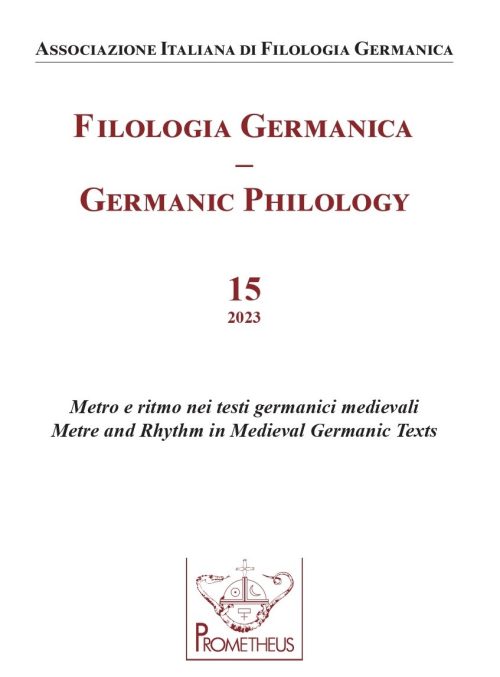The many virtues of the strange Type Eε. Metre, Semantics and intertextuality in dróttkvætt
DOI:
https://doi.org/10.14672/fg.v15i.2430Parole chiave:
skaldic poems, dróttkvætt, Eduard SieversAbstract
The pattern which Eduard Sievers defined as “Eε” is the only line-type in dróttkvætt to have a trisyllabic word in the final metrical positions 4-6, thus deviating from the otherwise ubiquitous disyllabic closing (positions 5-6). This entails prosodic peculiarities that have the effect of emphasizing the compound occurring at the end of the line, which in early dróttkvætt happens often to be a proper name. When this is the case, Eε-lines can also violate the rule, also known as Craigie’s Law, according to which only short-stemmed nouns should occupy position 4. Despite their prosodical oddity, Eε-lines are relatively frequent throughout the corpus. In fact, arguably because of their exceptional features, these lines were used since the earliest known skaldic poems in rhetorically charged functions, such as the celebration of the skald’s patron or in the poem’s refrain (stef). Another conspicuous characteristic of Eε-lines is their tendency to recur as formulaic tags, echoes and in deliberate intertextual games across the skaldic canon. Metrical exceptions and licenses appear indeed to have attracted the skalds’ attention and to have played a key role in skaldic referentiality. The present article will explore the interface between metre, semantics and intertextuality in Eε-lines, with an eye to the occurrence of identical lines poem-internally (refrain-technique) as well as across the corpus of early poetry in dróttkvætt.
Pubblicato
Fascicolo
Sezione
Licenza

Questo lavoro è fornito con la licenza Creative Commons Attribuzione - Condividi allo stesso modo 4.0.
CC-BY-SA



